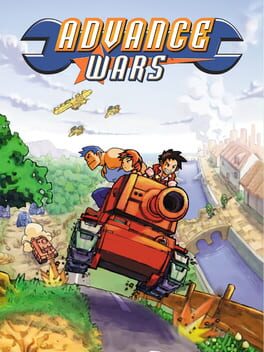Micro wins battles, macro wins wars. It’s a concept that RTS players know well, and most people tend to lean into one side of that equation more than the other. Being excellent at micromanaging units can help stretch their value enough to make up for a bad economy, and skillful macro decision making can foot the cost of inefficient maneuvering. Advance Wars is fairly unique in how it takes this paradigm into the realm of turn-based strategy, which usually focuses on individual encounters. Whether that be through Xcom or Fire Emblem, mechanics based around economy are normally relegated to the time outside of battles, but with this game’s focus on capturing cities to gain resources with which to build new units, players have to manage both strategic layers. It’s important to understand the strengths of each unit and ensure they get favorable engagements, but hanging back and waiting for opportunities isn’t a viable strategy whenever that would allow an opponent to capture resources. However, the scenario design and mechanics for attacking and capturing still heavily favor the defensive approach. Most maps provide players with a small group of cities which can be captured safely, with others closer to the AI requiring a committed force to hold, so the early game rarely allows aggressive play. This is especially true when considering how cities need multiple turns to be captured, taking a minimum of two if the occupying infantry is at its max of ten health, but five turns for a four-health unit to accrue the twenty capture points. All progress is reset if the infantry is killed or moves away, it can’t attack while capturing, and two units can’t occupy the same tile, so captures require a good deal of security. Then, add that to how ferrying units to contested zones with an APC requires five thousand additional points, equivalent to the output of a city for five full turns, so it’s easy to see how turtling is often the best approach. The combat between units essentially works the same way with how damage is modified by a unit's health, heavily incentivizing sitting out of range until you can get the first strike. As the cherry on top, long-range units require a turn to set up after moving, so if a line of artillery is guarded by armored units, it’s almost impenetrable without overwhelming force.
There are a few mechanics that keep the game from turning into a complete cold war though, and when these factors begin to shine towards the end of the game, the quality of the entire experience notably improves. Namely, the terrain becomes more robust and incentivizes a multi-pronged force of boats, planes, infantry, and vehicles. Players need to create zones of control even without walls of units, and the strategy begins to emulate something of a real battle. Mountain passes are fortified, jets are kept in strategic locations and scrambled in response to bombers, and each commander’s quirks factor into the types of engagements that are pursued or avoided. The only complaint I have is that these sorts of scenarios are in the minority, with most falling somewhere between the overly simple and the aforementioned defensive creeping. If the mechanics were going to favor a defensive posture so much, the scenario and map design should ideally pick up the slack and provide a balance, but this is something the game doesn’t quite achieve. Luckily, this is an aspect that Advance Wars 2 would try to focus on, so I’m doing something unique here and continuing the review directly with one for Advance Wars 2. Both games were included in the same cartridge in Japan, and will be released in a combined remake for the Switch, so you can find the rest of the combined-arms review over here:
https://www.backloggd.com/u/Uni/review/161218/
There are a few mechanics that keep the game from turning into a complete cold war though, and when these factors begin to shine towards the end of the game, the quality of the entire experience notably improves. Namely, the terrain becomes more robust and incentivizes a multi-pronged force of boats, planes, infantry, and vehicles. Players need to create zones of control even without walls of units, and the strategy begins to emulate something of a real battle. Mountain passes are fortified, jets are kept in strategic locations and scrambled in response to bombers, and each commander’s quirks factor into the types of engagements that are pursued or avoided. The only complaint I have is that these sorts of scenarios are in the minority, with most falling somewhere between the overly simple and the aforementioned defensive creeping. If the mechanics were going to favor a defensive posture so much, the scenario and map design should ideally pick up the slack and provide a balance, but this is something the game doesn’t quite achieve. Luckily, this is an aspect that Advance Wars 2 would try to focus on, so I’m doing something unique here and continuing the review directly with one for Advance Wars 2. Both games were included in the same cartridge in Japan, and will be released in a combined remake for the Switch, so you can find the rest of the combined-arms review over here:
https://www.backloggd.com/u/Uni/review/161218/
